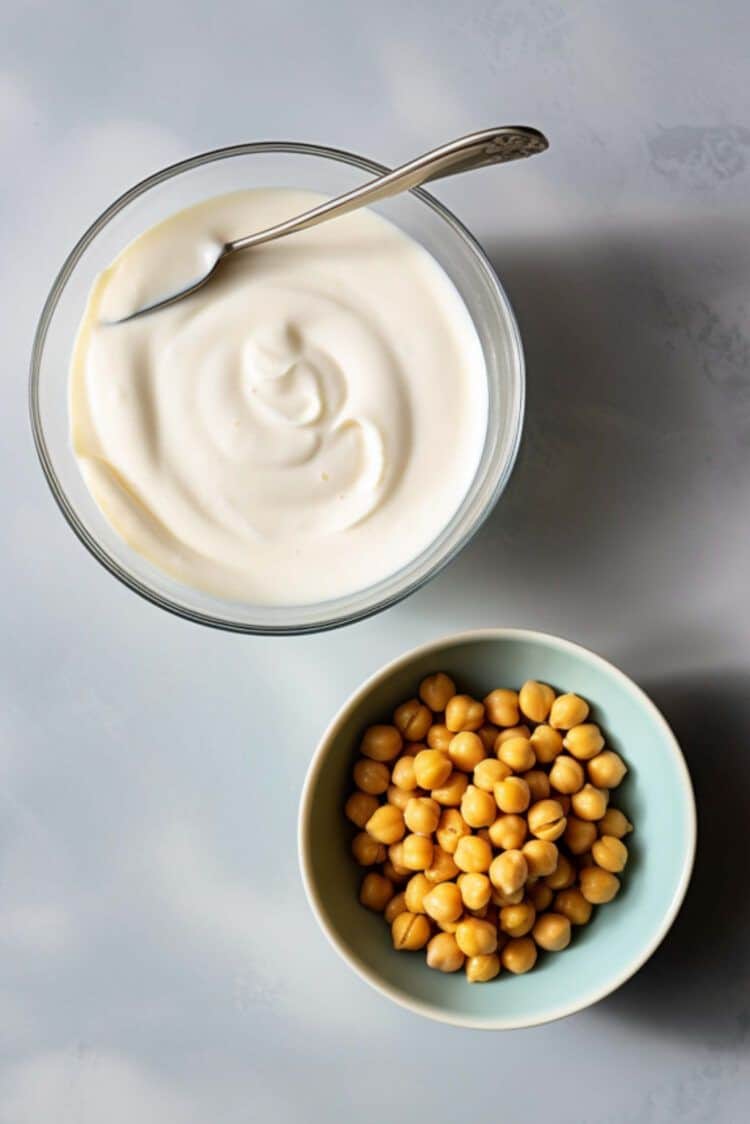Aquafaba, the magical liquid found in cans of chickpeas, has taken the vegan cooking world by storm. This versatile ingredient is a game-changer if you want to replace eggs in your cocktail recipes.

Whether you are a vegan or have an egg allergy, or don’t trust raw egg whites in cocktails, aquafaba is your new best friend in the kitchen.
What is Aquafaba?
Aquafaba is the viscous liquid leftover after cooking chickpeas or other legumes. It has a similar consistency to egg whites
Which means you can use it as a substitute in recipes from baked goods to meringues and – yes – cocktails. The word “aquafaba” itself is a combination of the Latin words for water (aqua) and bean (faba).
Why Use Aquafaba?
Aquafaba is a fantastic alternative to eggs for several reasons. It’s entirely plant-based, so it’s vegan. It’s also a little lower in calories than eggs.
And it’s safe for people with egg allergies. It’s also much less likely to develop salmonella than raw egg.
And as a bonus, using aquafaba helps reduce food waste by repurposing something that would typically be discarded. Instead of throwing out the liquid from a can of chickpeas, you make it into something delicious.
This is a great way to make your cocktail routine more sustainable!
How to Make Aquafaba at Home
Making aquafaba at home is incredibly simple. Follow these easy steps:
- Drain a can of chickpeas into a bowl, making sure you keep the liquid.
- Strain the liquid through a fine-mesh sieve to remove any solids or clumps.
- Transfer the liquid to a mixing bowl and use a hand mixer or stand mixer to whip it on high speed.
- After a few minutes, the liquid will transform into a frothy, white foam resembling whipped egg whites.
- Continue whipping until stiff peaks form. This may take anywhere from 5 to 10 minutes, depending on the equipment used.
- Once you have achieved stiff peaks, your homemade aquafaba is ready to use in your favorite recipes.
Note: If you prefer to use cooked chickpeas instead of canned ones, simply save the cooking liquid after boiling them. The process remains the same.
Tips for The Best Aquafaba
While making aquafaba is relatively straightforward, here are some tips to give you the best results:
- Use unsalted canned chickpeas or cook your own chickpeas from scratch. Avoid using chickpeas cooked in salted water, as this can affect the taste and texture of the aquafaba.
- Use a clean, dry bowl and utensils when whipping aquafaba. Any moisture or residue can hinder the foaming process.
- Add cream of tartar or lemon juice to stabilize the aquafaba and help it hold its shape.
- Experiment with different types of legume liquid, such as white bean or black bean, for unique flavors and colors in your recipes.
How to Substitute Aquafaba for Eggs in Cocktails
This is so simple! When you come across an egg white cocktail recipe, replace 1 egg white with 3 tablespoons of aquafaba.
Just put the aquafaba into the cocktail shaker like you would the egg. Dry shaking is ideal, just as it is with the egg, and that means shaking the ingredients without ice for 15 seconds and then adding the ice and shaking them at least 15 more seconds.
Storage and Shelf Life
Aquafaba can be stored in an airtight container in the refrigerator for up to one week. It can also be frozen in ice cube trays for longer-term storage.
When thawed, it may lose some of its foaming properties but can still be used in recipes that don’t rely on its ability to whip.
Exploring Aquafaba Beyond Baking
While aquafaba is commonly used as an egg substitute in baking, its uses extend beyond sweet treats. Here are some creative ways to incorporate aquafaba into your cooking:
- Use it as an egg wash for breaded items like tofu or cauliflower.
- Make vegan mayo by emulsifying aquafaba with oil and seasonings.
- Whip it into a light and fluffy vegan buttercream frosting for cakes and cupcakes.
- Create vegan cheese alternatives by blending aquafaba with cashews or nutritional yeast.
